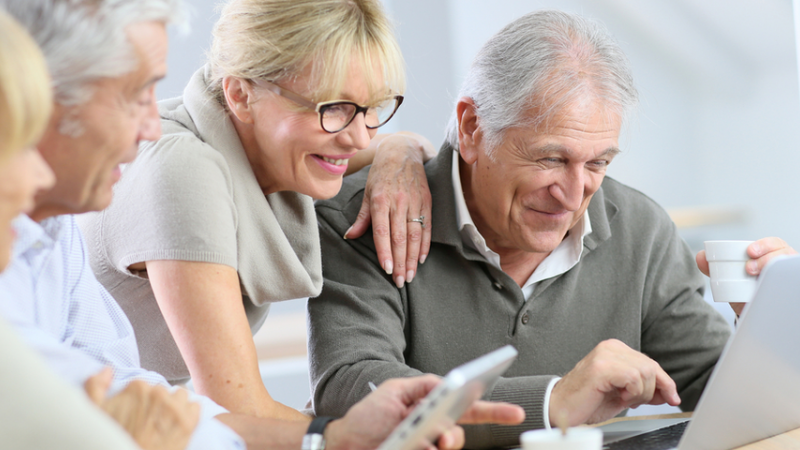Today, the influence of digital technology is ever-growing. Due in part to its demystification with free online resources, lowered cost and increased availability, older adults are taking advantage of technology and digital tools. In fact, according to a study published by the Pew Research Center in 2017, over 67 percent of seniors say they regularly go online.
The impact potential digital tools have on the senior community is huge. Thanks to some of the technological advances listed below, older adults can try new things, make informed health decisions, and stay in their own homes longer than ever before. Check them out below:
Digital Safety
Being able to live independently in the home as we age has become an increasing priority for many. With safety being of paramount importance, it’s no wonder there have been recent innovations in digital safety for older adults.
From GPS trackers for adults with dementia to on-demand caregiving services to in-home and on-the-go medical alert systems for emergencies or non-emergencies, these devices provide peace of mind to older adults and their loved ones. When it comes to aging in place, it’s so important to plan for any potentially dangerous situations that could arise, which is where these resources prove to be invaluable.
Apps & Wearables
Another important component of senior health is active aging—comprised of a balanced fitness and nutrition regimen. Getting a gym membership or making a commitment to healthy eating is a great first step, but many strides have been made that give older adults potential to elevate an existing routine, while also providing much-needed support.
Trends in the wellness space have come in the form of smartphone apps (like MyFitnessPal) and wearable health trackers (such as a Fitbit or Apple Watch), two ideas that work seamlessly together to create the ultimate health experience. Whether you seek the guidance of a virtual trainer, want to learn more about exercise trends like yoga, HIIT cardio or strength training to improve mobility, or even just how your daily habits affect your health, the answers are in these apps and devices.
Telehealth
Though not a new concept, the field of telemedicine is experiencing an influx of support from hospitals and providers who recognize the benefits associated with a low-cost, virtual system for continuing care. Lawmakers are even moving to make Medicare patients eligible for telehealth options both as a basic benefit and for more intensive at-home care for patients on dialysis.
Even though it’s unlikely that we will ever replace a physical doctor’s visit entirely, telehealth is becoming a valuable supplement. Through personalized care plans, follow up calls with trained physicians, at-home support, and organized medical records, the practice has the potential to provide older adults with a more consistent quality of care, anywhere in the world—for a much lower cost than in previous decades.
Social Media
According to the previously mentioned Pew Internet study, the number of older adults using social networking sites has increased from 27% to 34% within five years. What’s interesting about the idea of social media is that individuals can share information with one another, without knowing one another, and are able to interact with brands that have previously been sheltered from public opinion.
Starting a social media account, such as Instagram, Facebook, or Twitter, is free. Most companies have a strong web presence as a part of their marketing strategy, which makes it easy to leave reviews, address concerns, or learn additional information. You can also join (closed) Facebook groups or discussion forums based on interests, age, location, and health conditions to stay on track and connected to others in your community.
Online Grocery Shipping Companies
Companies such as Amazon have revolutionized the on-demand shopping experience. With speedy shipping and delivery options available for just about anything you can think of—it’s as easy as the click of a button for older adults to get ahold of healthy products.
If you’re unable to get to a store, services like Instacart and Peapod provide grocery deliveries straight from your local store to your home. Additionally, sites like Thrive Market are great options when searching for dry goods and specialty health food options that can be delivered as well. Services like these, along with online shipping options from Amazon and other retailers, make it that much easier to operate independently while also making sure you have every amenity necessary for a healthy lifestyle.
A Resource for Everyone
Technology has ushered an era of both convenience and affordability that speaks to the possibility of a better quality of life for older adults. Whether it’s a life-saving system that connects you to an emergency operator as soon as an emergency strikes or a device that helps you reach your fitness goals or stave off age-related conditions—there’s a resource available at the tips of your fingertips—no matter your age, background or income.

